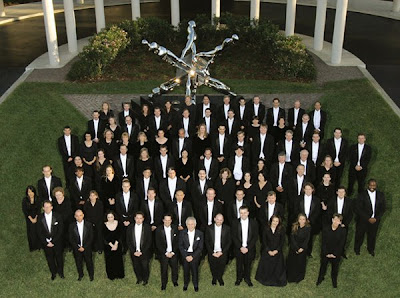WEST PALM BEACH — Florida has any number of symphonic ensembles, but some of them are more fortunate than others.
The Naples Philharmonic is one of those in the extra-blessed category, not least because it has been led for five years by Jorge Mester, a well-known conductor with a strong international reputation. It also has had, for 20 years, a performance space to call its own at the Philharmonic Center for the Arts, and if that weren’t enough to make South Floridians a little jealous of their Southwest Florida colleagues, the orchestra in question also turns out to be a pretty good band.
During a concert appearance under guest conductor Stuart Malina at the Kravis Center on Sunday night, the Naples Philharmonic did a more than credible job with some of the core symphonic repertory, including the Der Freischutz overture of Carl Maria von Weber and the Second Symphony of Beethoven. All the important elements for a reputable concertgoing experience were there, including sectional depth, technical accomplishment, and attention to expressive detail.
If there were still heights just beyond its reach, there weren’t many, and the music-making overall was good enough to make a trip across Alligator Alley worth doing to catch the orchestra at its home on Pelican Bay.
The two German works stood in sharp contrast for several reasons to the other work on the program, the durable Piano Concerto in A minor, Op. 16, of Edvard Grieg. Scholars have often pointed out that Grieg’s concerto, while indebted to Schumann, also is much more akin to the forgotten flashy concertos of 19th-century virtuosi such as Henri Herz than it is to the concertos of Beethoven or Brahms, and that only its exceptional melodic distinction keeps it before audiences.
In addition to its beguiling tunes, which retain their power, the Norwegian composer’s concerto calls for sizzle from the soloist, and in an exposed way. Everything from the aggressive opening bars to the falling scale patterns of the slow movement, to the stomping theme of the third, is driven by the soloist, and the orchestra lays back.
The soloist Sunday night was the Naples-based pianist Jodie DeSalvo, and the impression she left of her approach to the piece overall was stiffness, as well as a lack of clean technique at the most virtuosic moments. DeSalvo hammered many of her passages in the outer movements, as if she was trying to make the concerto into something more grandiose than it is.
The third movement main theme, for example, demands muscle but also sport. It’s a folk dance, and it has to have a sense of lightness and play, of joy and high spirits, but there was little to none of that here. Some of the most exposed moments were marred by clunkers, such as the piano’s very first entrance, and in the trill-like effusions of the second, which were spiced by a random blue note as the music descended.
DeSalvo was at her best in the slower, more meditative passages, when she could dig into the beautiful tunes, but there were too many other inconsistencies. The climactic G-natural in the last bars — an effect saluted by none other than Franz Liszt — got a pianistic brushoff instead of emphasis, and I don’t know why DeSalvo added a tremolando chord on the last note, when a single A in octaves is all that’s called for.
The orchestra accompanied DeSalvo well for the most part, but there were several instances, primarily at sectional breaks, when soloist and ensemble were not together, and the cellos were oddly underpowered in the recap of the second movement, when it’s their turn to sing out.
The Beethoven Second Symphony (in D, Op. 36), which occupied the second half of the concert, might be the least-performed of the great nine, but it’s a terrific piece that looks back to Haydn and forward to the younger composer’s own use of the symphony as the vehicle for a compelling dramatic narrative. Malina led a lean, sinewy performance that had just the right feel for Beethoven’s improvisatory style and in-your-face wit.
The symphony was played by an orchestra that has real strength in all its sections, which in practical terms means strings that can play difficult, busy passages with clarity and precision, winds that know how to play with a period sound, and brasses that are reliable when it’s time to punctuate. The horns were especially notable in this regard, with only one slight glitch in the treacherous writing of the second movement.
It was only in that movement that a case for improvement could be made, with the tuning and unison of the first violins not quite there in the skipping 32nd-notes of the movement’s closing bars. The third movement could have used some more distinct contrast, too, with greater light and dark between the accented chords and three-note dashes of the scherzo itself and with the trio as a whole.
But the finale made up for it, with admirable unity on the galumphing main motive and a perfect sense of surprise and shock throughout. The music was helped by the smaller forces on stage for the work, which underlined rather than obscured Beethoven’s vivid writing.
The concert opened with a fine performance of the Der Freischutz overture. Here again, the horns acquitted themselves beautifully in the crucial opening theme, so redolent of German Romanticism, and while Malina’s tempo for the Molto vivace could have been swifter, in general he brought a good conception of the piece to bear that properly illuminated its mystery and power.
